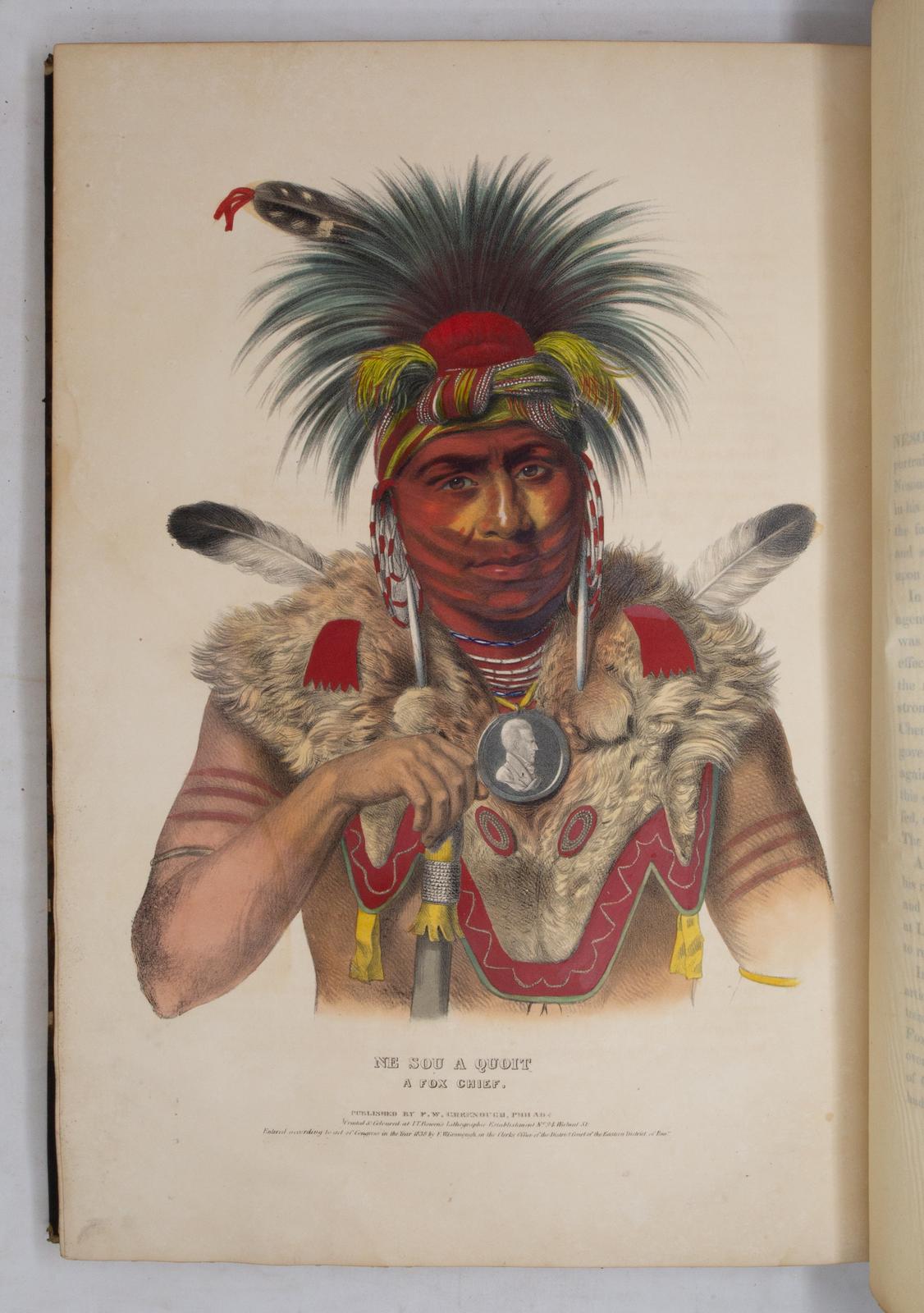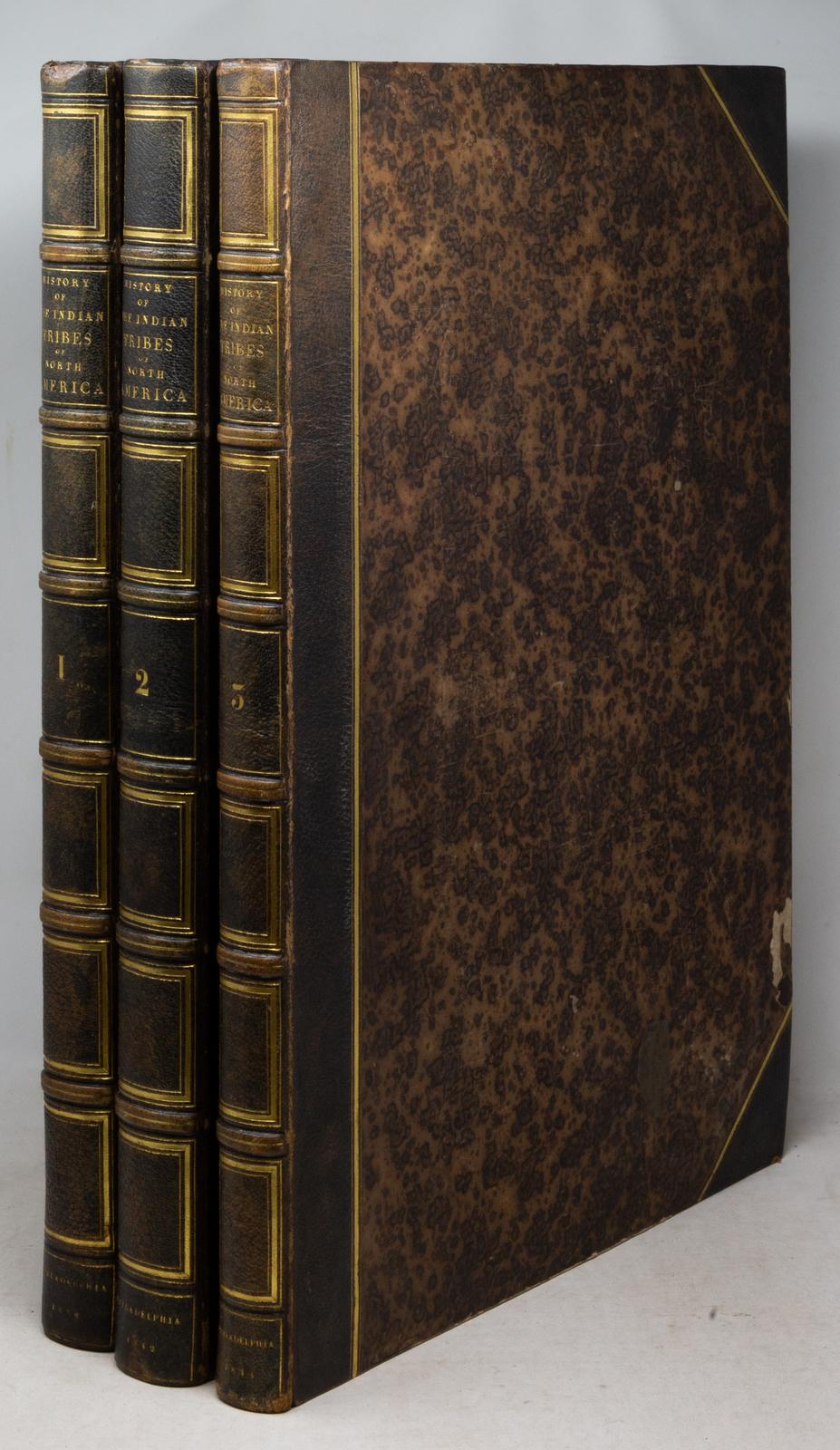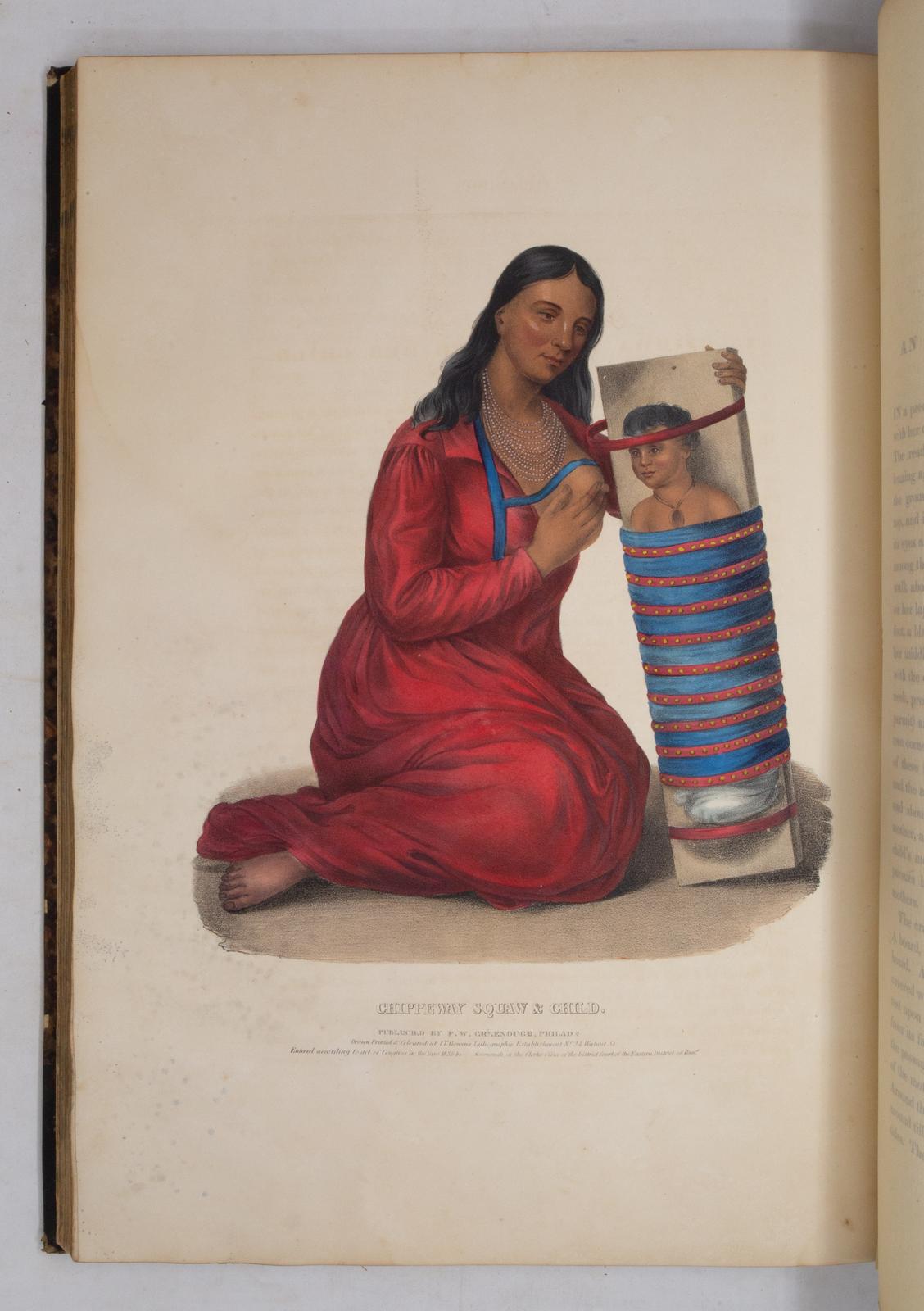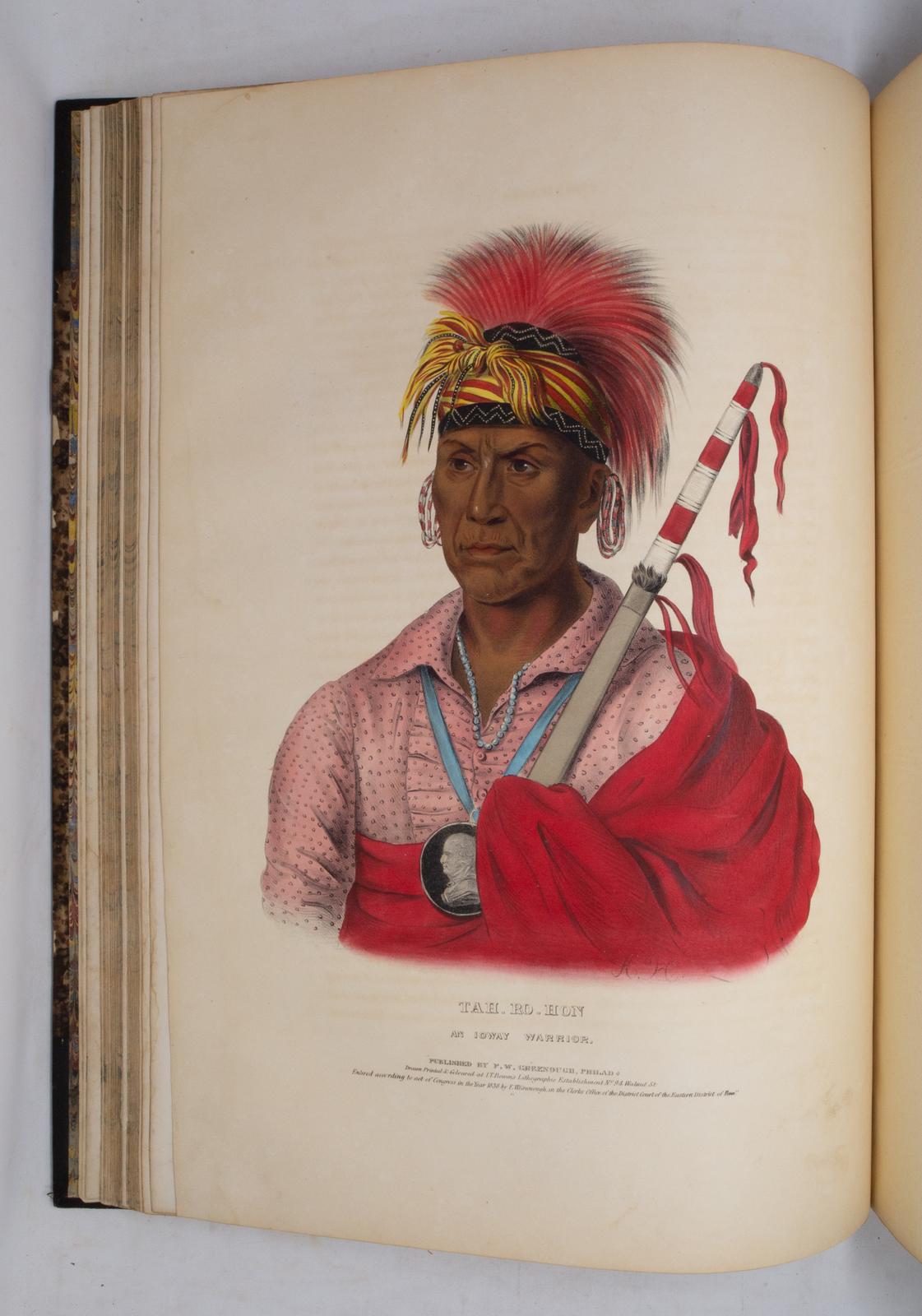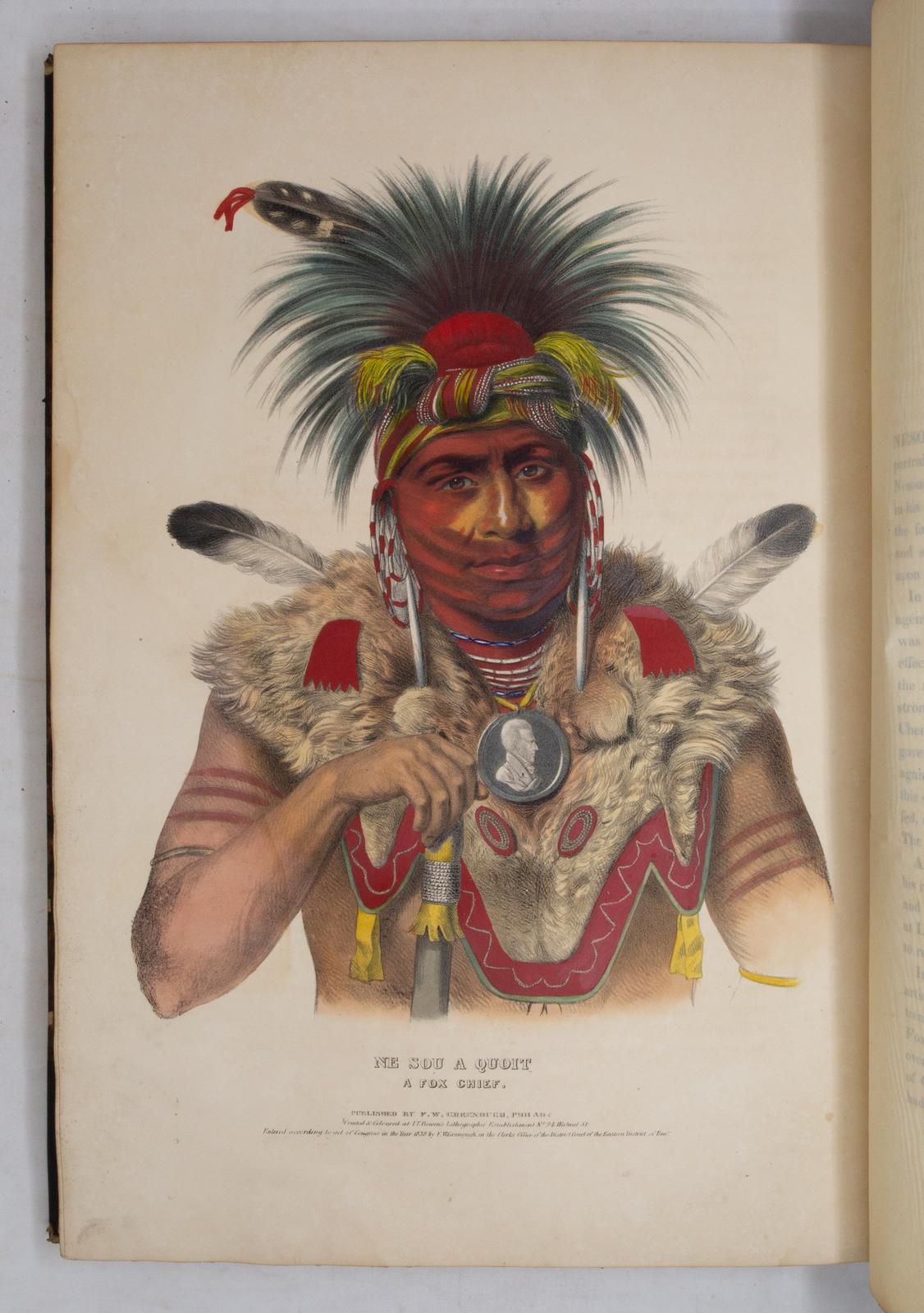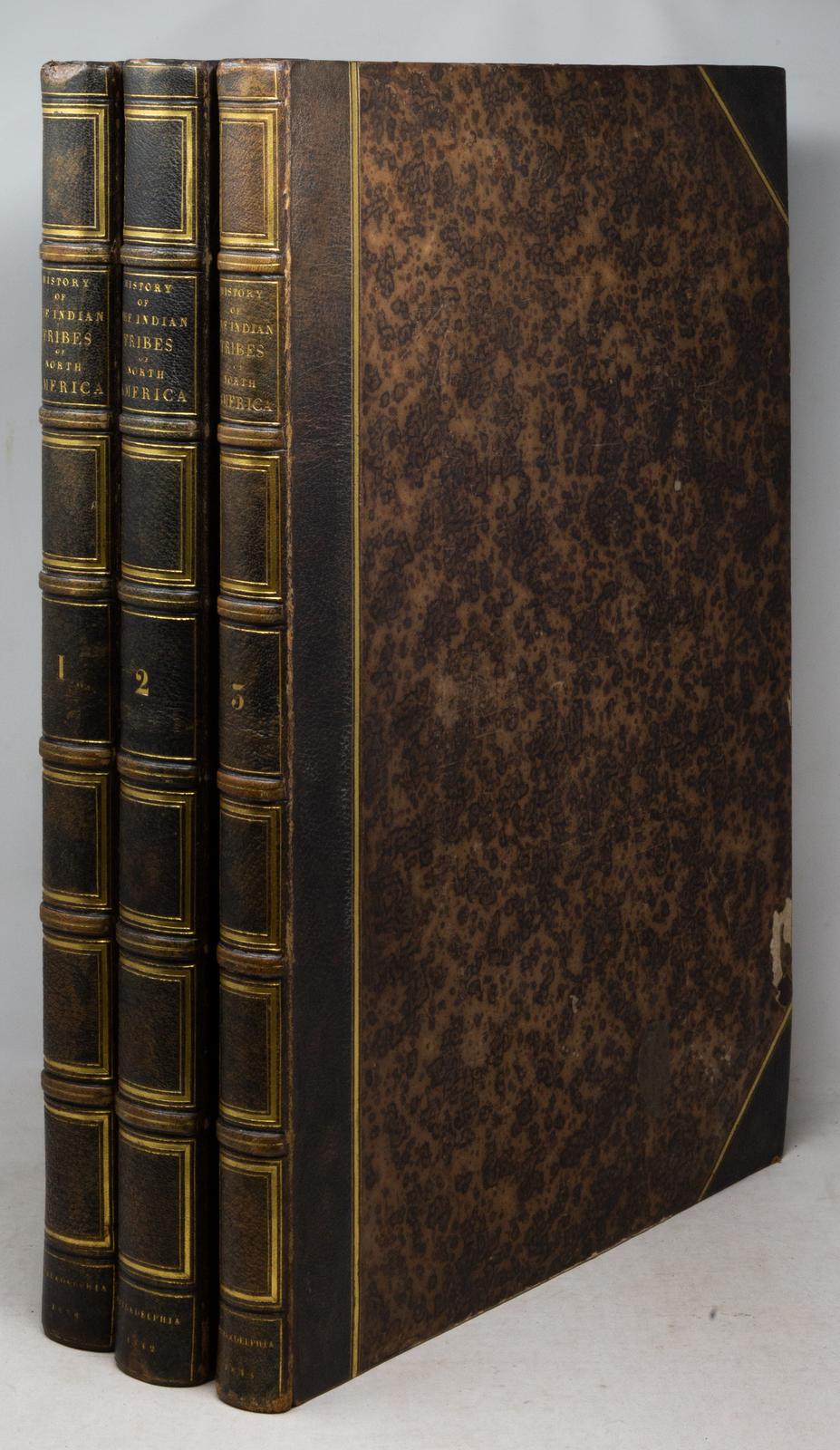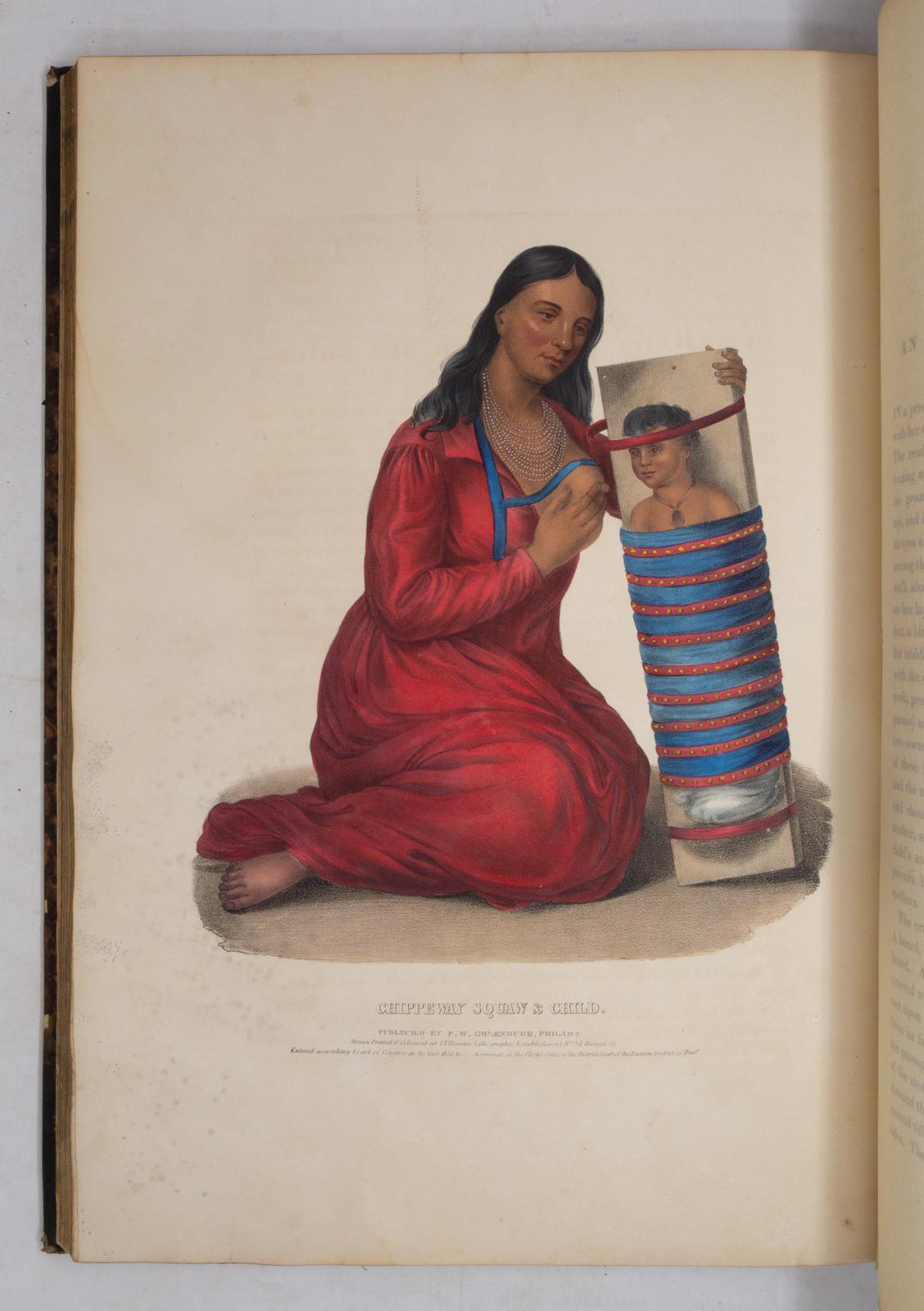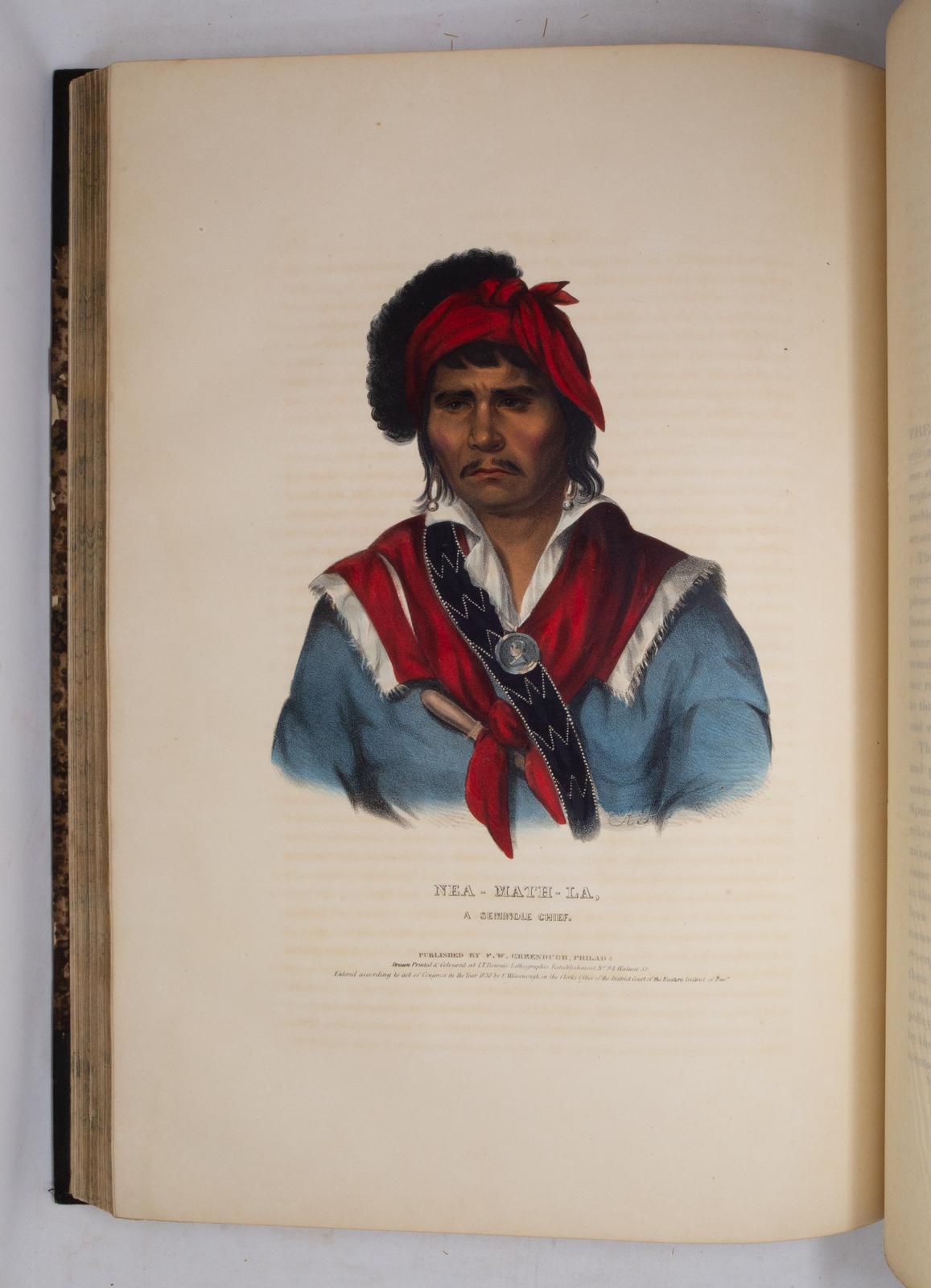from: 6westernbooks
McKenney and Hall. History of the Indian Tribes of North America… 1844
McKenney and Hall. History of the Indian Tribes of North America… 1844
Regular price
$ 135,000.00 USD
Regular price
Sale price
$ 135,000.00 USD
Unit price
per
Couldn't load pickup availability
MCKENNEY, Thomas L. (1785-1859) and James HALL (1793-1868).
History of the Indian Tribes of North America.
Philadelphia: Frederick W. Greenough, 1838 (vol. 1); Daniel Rice & James G. Clark, 1842; 1844 (vols. 2-3), 1844.
FIRST EDITION, "OF THE GRANDEST COLOR PLATE BOOK ISSUED IN THE UNITED STATES UP TO THE TIME OF ITS PUBLICATION AND ONE OF THE MOST IMPORTANT OF THE CENTURY" (Reese).
3 volumes, folio (20" x 14 1/2"). 120 handcolored lithographed plates heightened with gum arabic after Charles Bird King, Karl Bodmer, James Oto Lewis, P. Rindisbacher, and R. M. Sully, drawn on stone by A. Newsam, A. Hoffy, Ralph Trembley, Henry Dacre and others, printed and colored by J.T. Bowen and others, leaf of testimonials regarding the genuineness of the portrait of Pocahontas, leaf of lithographed maps and table and 17 pages of facsimile signatures of subscribers in vol. 3, BAL State C of vol. 1 title-page, State B of vol. 2 title-page, State A of vol. 3 title-page, War Dance frontispiece (in vol. 1) in State D, Red Jacket plate in State F; dampstaining and occasional scattered foxing to text, most pronounced in vols. 1 and 3, most plates cockled, some marginal dampstaining, occasional toning or mottling of plates, light to moderate text offsetting to plates throughout. Contemporary half green morocco gilt over brown marbled boards, the spines in 7 compartments gilt-filleted, lettered and numbered with raised bands, nonpareil marbled endpapers, marbled edges; extremities rubbed, several scrapes to boards (some with rudimentary repairs), lower edge of vol. 1 front board slightly bumped.
Volumes I and 2 in the second issue, and Volume 3 in the first issue. Its long publication history spanned twelve years and involved multiple lithographers (mainly Peter S. Duval and James T. Bowen) and publishers, but the final product is one of the most important and distinctive books in Americana. Soon after his appointment as Superintendent of Indian Trade in 1816, Thomas L. McKenney struck upon the idea of creating an archive to preserve the artifacts and history of Native Americans whose culture was rapidly disappearing. The Archives of the American Indian became the first national collection in Washington and were curated with great care by McKenney throughout his tenure as Superintendent and then in 1824 as first head of the Bureau of Indian Affairs. A visit to the studio of artist Charles Bird King inspired McKenney to add portraits to the Archives. For the next twenty years, King would capture the likenesses of the many visiting Indian dignitaries who had come to Washington to meet the "Great Father" (i.e., the president). Counted among King's sitters were Sequoyahas, Red Jacket, Cornplanter, Major Ridge, and Osceola. Additionally, he reworked the in-situ watercolors of frontier artist James Otto Lewis. The original paintings were deposited with the War Department and eventually transferred to the Smithsonian, where in 1865, a fire destroyed most of them.
Consequently, their appearance in Indian Tribes is the only recorded likeness of many of the most prominent Indian chiefs, warriors, and squaws of the nineteenth century. McKenney was preparing to publish a collection of the Indian portraits when he lost his position at the Bureau during Andrew Jackson's house cleaning in 1830. Other setbacks befell the project: publishers went bankrupt, investors dropped out, and expenses soared mostly like as a result of the depression that followed the financial panic of 1837. McKenney finally enlisted Ohio jurist and writer James Hall to assist with the project. Hall completed the individual biographies of each subject and put the finishing touches on the general history. Meanwhile, James Otto Lewis published his own Aboriginal Port-Folio in 1835. Unfortunately for Lewis, the illustrations were of inferior quality and few of its later numbers were ever completed. By contrast, McKenney and Hall's work was a resounding artistic success-the lithographs were of such impeccable quality that John James Audubon commissioned James T. Bowen to produce the illustrations for a revised edition of his Birds of America.
History of the Indian Tribes of North America.
Philadelphia: Frederick W. Greenough, 1838 (vol. 1); Daniel Rice & James G. Clark, 1842; 1844 (vols. 2-3), 1844.
FIRST EDITION, "OF THE GRANDEST COLOR PLATE BOOK ISSUED IN THE UNITED STATES UP TO THE TIME OF ITS PUBLICATION AND ONE OF THE MOST IMPORTANT OF THE CENTURY" (Reese).
3 volumes, folio (20" x 14 1/2"). 120 handcolored lithographed plates heightened with gum arabic after Charles Bird King, Karl Bodmer, James Oto Lewis, P. Rindisbacher, and R. M. Sully, drawn on stone by A. Newsam, A. Hoffy, Ralph Trembley, Henry Dacre and others, printed and colored by J.T. Bowen and others, leaf of testimonials regarding the genuineness of the portrait of Pocahontas, leaf of lithographed maps and table and 17 pages of facsimile signatures of subscribers in vol. 3, BAL State C of vol. 1 title-page, State B of vol. 2 title-page, State A of vol. 3 title-page, War Dance frontispiece (in vol. 1) in State D, Red Jacket plate in State F; dampstaining and occasional scattered foxing to text, most pronounced in vols. 1 and 3, most plates cockled, some marginal dampstaining, occasional toning or mottling of plates, light to moderate text offsetting to plates throughout. Contemporary half green morocco gilt over brown marbled boards, the spines in 7 compartments gilt-filleted, lettered and numbered with raised bands, nonpareil marbled endpapers, marbled edges; extremities rubbed, several scrapes to boards (some with rudimentary repairs), lower edge of vol. 1 front board slightly bumped.
Volumes I and 2 in the second issue, and Volume 3 in the first issue. Its long publication history spanned twelve years and involved multiple lithographers (mainly Peter S. Duval and James T. Bowen) and publishers, but the final product is one of the most important and distinctive books in Americana. Soon after his appointment as Superintendent of Indian Trade in 1816, Thomas L. McKenney struck upon the idea of creating an archive to preserve the artifacts and history of Native Americans whose culture was rapidly disappearing. The Archives of the American Indian became the first national collection in Washington and were curated with great care by McKenney throughout his tenure as Superintendent and then in 1824 as first head of the Bureau of Indian Affairs. A visit to the studio of artist Charles Bird King inspired McKenney to add portraits to the Archives. For the next twenty years, King would capture the likenesses of the many visiting Indian dignitaries who had come to Washington to meet the "Great Father" (i.e., the president). Counted among King's sitters were Sequoyahas, Red Jacket, Cornplanter, Major Ridge, and Osceola. Additionally, he reworked the in-situ watercolors of frontier artist James Otto Lewis. The original paintings were deposited with the War Department and eventually transferred to the Smithsonian, where in 1865, a fire destroyed most of them.
Consequently, their appearance in Indian Tribes is the only recorded likeness of many of the most prominent Indian chiefs, warriors, and squaws of the nineteenth century. McKenney was preparing to publish a collection of the Indian portraits when he lost his position at the Bureau during Andrew Jackson's house cleaning in 1830. Other setbacks befell the project: publishers went bankrupt, investors dropped out, and expenses soared mostly like as a result of the depression that followed the financial panic of 1837. McKenney finally enlisted Ohio jurist and writer James Hall to assist with the project. Hall completed the individual biographies of each subject and put the finishing touches on the general history. Meanwhile, James Otto Lewis published his own Aboriginal Port-Folio in 1835. Unfortunately for Lewis, the illustrations were of inferior quality and few of its later numbers were ever completed. By contrast, McKenney and Hall's work was a resounding artistic success-the lithographs were of such impeccable quality that John James Audubon commissioned James T. Bowen to produce the illustrations for a revised edition of his Birds of America.
